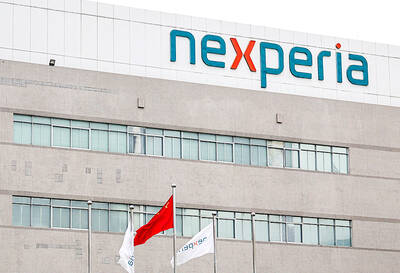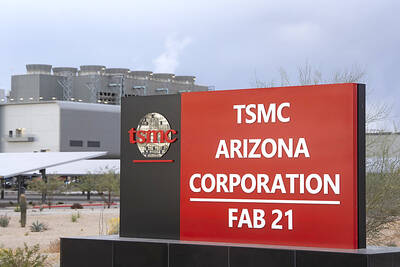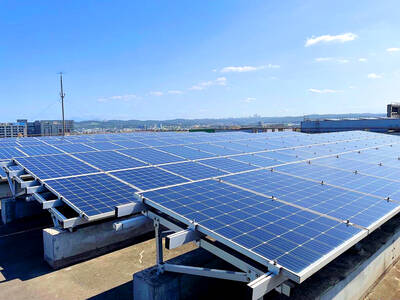The Chung-Hua Institution for Economic Research (CIER, 中華經濟研究院) yesterday raised its forecast for this year’s GDP growth from 1.73 percent to 2.11 percent, saying that the recovering global economy would benefit the nation’s exports and private investments.
“The stronger-than-expected momentum of the global economic recovery was the main reason CIER increased the forecast,” CIER president Wu Chung-shu (吳中書) told a news conference in Taipei.
With the nation’s exports’ performance steadily gaining momentum since the second half of last year, CIER is also raising its estimate for this year’s exports, Wu said.
However, domestic demand would contribute 1.57 percentage points of the 2.11 percent growth estimate, Wu said.
CIER is the second think tank after Yuanta-Polaris Research Institute (元大寶華綜經院) to estimate that the nation’s GDP growth is to surpass 2 percent this year.
The Directorate-General of Budget, Accounting and Statistics (DGBAS) in February said it foresees 1.92 percent growth this year, while the Taiwan Institute of Economic Research (TIER, 台灣經濟研究院) forecast 1.78 percent growth.
The IMF on Tuesday night said it would maintain its 1.7 percent GDP growth forecast this year for Taiwan.
Commenting on the IMF’s relatively conservative estimate, Wu said that although the economy is improving, there are uncertainties that might affect the nation’s economic growth.
Wu said he assumed the IMF has taken into account the pace of the US Federal Reserve’s interest rate hikes, northeastern Asia’s geopolitical dynamics and China’s continuing efforts to transform its economy.
Any drastic fluctuations in international crude oil prices would also influence Taiwan’s growth, Wu said, adding that as long as oil prices remain relatively stable, it will benefit the economies of Taiwan and the rest of the world.
As the US continues to extract shale oil and the global inventory for oil products remains relatively high, Wu said he foresees no sharp surges in international crude oil prices.
CIER forecast first-quarter GDP growth of 2.76 percent, supported by exports and industrial production momentum extending from the second half of last year, Wu said.
Growth is expected to slow to 2.17 percent this quarter, 1.83 percent next quarter and 1.75 percent in the final quarter of this year, due to a higher comparison base last year, Wu said.
In addition, CIER forecast GDP growth next year of 2.15 percent, the first time the institution has released an estimate for next year’s economic growth.

JITTERS: Nexperia has a 20 percent market share for chips powering simpler features such as window controls, and changing supply chains could take years European carmakers are looking into ways to scratch components made with parts from China, spooked by deepening geopolitical spats playing out through chipmaker Nexperia BV and Beijing’s export controls on rare earths. To protect operations from trade ructions, several automakers are pushing major suppliers to find permanent alternatives to Chinese semiconductors, people familiar with the matter said. The industry is considering broader changes to its supply chain to adapt to shifting geopolitics, Europe’s main suppliers lobby CLEPA head Matthias Zink said. “We had some indications already — questions like: ‘How can you supply me without this dependency on China?’” Zink, who also

Taiwan Semiconductor Manufacturing Co (TSMC, 台積電) received about NT$147 billion (US$4.71 billion) in subsidies from the US, Japanese, German and Chinese governments over the past two years for its global expansion. Financial data compiled by the world’s largest contract chipmaker showed the company secured NT$4.77 billion in subsidies from the governments in the third quarter, bringing the total for the first three quarters of the year to about NT$71.9 billion. Along with the NT$75.16 billion in financial aid TSMC received last year, the chipmaker obtained NT$147 billion in subsidies in almost two years, the data showed. The subsidies received by its subsidiaries —

At least US$50 million for the freedom of an Emirati sheikh: That is the king’s ransom paid two weeks ago to militants linked to al-Qaeda who are pushing to topple the Malian government and impose Islamic law. Alongside a crippling fuel blockade, the Group for the Support of Islam and Muslims (JNIM) has made kidnapping wealthy foreigners for a ransom a pillar of its strategy of “economic jihad.” Its goal: Oust the junta, which has struggled to contain Mali’s decade-long insurgency since taking power following back-to-back coups in 2020 and 2021, by scaring away investors and paralyzing the west African country’s economy.

RE100 INITIATIVE: Exporters need sufficient supplies of renewable energy to meet their global commitments and remain competitive, the economics ministry said Local export-oriented manufacturers, including Taiwan Semiconductor Manufacturing Co (台積電), require sufficient supplies of green energy to maintain their competitiveness and regulations already ensure that renewable energy development adheres to environmental protection principles, the Ministry of Economic Affairs said yesterday, as the legislature imposed further restrictions on solar panel installations. The opposition-led Legislative Yuan yesterday passed third readings to proposed amendments to three acts — the Environmental Impact Assessment Act (環境影響評估法), the Act for the Development of Tourism (發展觀光條例) and the Geology Act (地質法) — which would largely prohibit the construction of solar panels in some areas. The amendments stipulate that ground-mounted solar